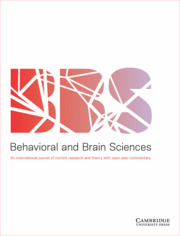No CrossRef data available.
Article contents
Optimism for the future of unified theories
Published online by Cambridge University Press: 12 April 2004
Abstract:
The commentaries on our article encourage us to believe that researchers are beginning to take seriously the goal of achieving the broad adequacy that Newell aspired to. The commentators offer useful elaborations to the criteria we suggested for the Newell Test. We agree with many of the commentators that classical connectionism is too restrictive to achieve this broad adequacy, and that other connectionist approaches are not so limited and can deal with the symbolic components of thought. All these approaches, including ACT-R, need to accept the idea that progress in science is a matter of better approximating these goals, and it is premature to be making judgments of true or false.
Information
- Type
- Authors' Response
- Information
- Copyright
- Copyright © Cambridge University Press 2003

